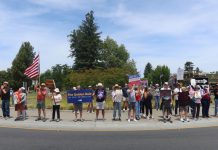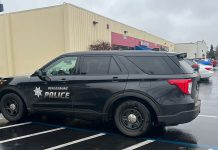The opioid epidemic, which includes everything from prescription narcotics to heroin, is now the greatest public health crisis of our time. Last year there were over 64,000 drug overdose deaths, a 22 percent increase over the previous year. This is more than the fatality rate of automobile accidents or any other cause of accidental death.
In Sonoma County alone, there is one death per week from unintentional drug overdose, twice the number of deaths from motor vehicle accidents. There has also been a dramatic, 73 percent increase in non-fatal opioid related emergency department visits since 2010. Included in this is a 267 percent increase in heroin related visits.
Costing more than $467 billion a year, substance abuse remains the largest preventable and most costly public health problem in the U.S. Currently it is estimated that over 21 million individuals ages 12 and above meet criteria for opioid addiction, essentially the same percentage of our population with diabetes.
Using these demographics suggests there are 38,000 individuals in Sonoma County suffering from substance abuse; 800 in our small town of Healdsburg.
Perhaps more alarming is the increasing use of opioids by adolescents. By best estimates, last compiled in 2015, 276,000 children ages 12 to 17 are current users of narcotics, with 21,000 using heroin. In virtually every case, the initiating event was the sharing of an opioid pain reliever by a friend or family member.
Clearly this is a major concern, but there is little consensus on how it is best addressed. On the federal level, efforts have largely been directed to education of prescribers, the importance of which cannot be overstated. That is only one aspect of a much larger problem.
How then can we, as a community, address this public health crisis in our small town? The Sonoma County Department of Health Services has recently initiated a community program directed to local prescribers by providing best practice guidelines for prescribing of narcotics.
The state has an effective monitoring system in place to identify individuals filling narcotics prescriptions obtained from different providers. Medical groups and other medical organizations have initiated education and internal monitoring, all of which are important strategies, but still not adequately addressing those already affected.
Key to addressing this public health epidemic is an understanding in the community of the extent of the problem. It is as common as diabetes — if we know someone with diabetes, we know someone with substance abuse.
Diabetes, however, is an open topic, unlike substance abuse. It is also easy to blame substance abuse on the user rather than the cause. Like diabetes, cancer and heart disease, addiction is caused by a combination of behavioral, environmental and biological factors. Genetic risks factors alone, over which there is no control, account for half of the likelihood that an individual will develop addiction.
It is, therefore, vital that we bring this epidemic into the light.
Some weeks ago, Walt Maack and Bretta Rambo came forward with their own story in a commentary published in the Tribune (reprinted at right). This letter, detailing the struggle of their son, Morgan, with addiction and ultimately his tragic death, so moved the community that a local committee comprised of physicians, nurses and other healthcare volunteers has been established to address the epidemic in our own town.
The committee is exploring potential interventions including education, prescriber support and public awareness. We are also reviewing local and regional programs that might be of benefit. One facet of public awareness is to focus on the transparency that comes with the act of sharing. It is empowering to the community.
With that in mind, we are inviting the community to share their own experiences with this epidemic. When the stigma associated with substance abuse lessens, individuals and families will be much more comfortable seeking help and the support of those around them. Experiences may be personal, family, work or other. These stories will be reviewed for publication with a goal of improving community awareness and acceptance.
If you have a story to share, we invite you to send it to the Healdsburg Tribune via ne**@***************ne.com. Submissions will be forwarded to our committee for review.
The newspaper does not typically publish anonymous letters or commentaries, but due to the nature of this epidemic, anonymity will be considered on a case-by-case basis. All submissions, however, require a name and contact information with the original submission to allow the committee the ability to contact and verify the author and to discuss anonymity concerns and any other issues.
Watch for submissions in this and future editions under the title: Share Your Story.
Locke Wilson is a family physician in Healdsburg.









